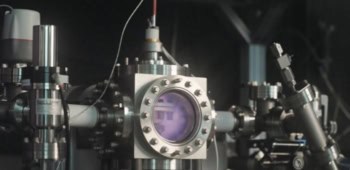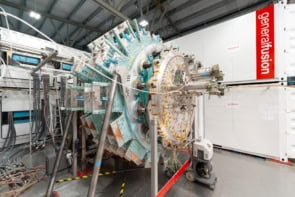Physicists in the US have demonstrated nuclear fusion in a “Z pinch” for the first time. Researchers at Sandia National Laboratories observed neutrons produced by the fusion of deuterium nuclei at the lab’s Z facility – the world’s most powerful X-ray source. The results were presented at a meeting of the American Physical Society in Philadelphia yesterday.

Fusion is the process that powers stars and, if harnessed in the laboratory, could provide a clean and almost limitless source of energy. However, fusion reactions are difficult to achieve because they require extremely high temperature plasmas, which must be confined long enough to be able to extract an appreciable amount of energy.
In the past, plasma has been confined by strong magnetic fields in “tokamaks” or by laser beams in inertial confinement experiments. The Sandia team used a “ Z-pinch” in which electrical current rapidly heats an array of tungsten wires into the plasma state and causes them to explode. These expanding wires then merge into a cylinder and produce higher intensity X-rays, which strike the surface of a target capsule containing deuterium. The X-ray energy produces a shock wave that heats and compresses the deuterium, leading to fusion.
The team estimates that about 10 billion neutrons are produced, which corresponds to an energy output of about 4 mJ. It now hopes that a larger Z-machine could increase this fusion yield in the future.



